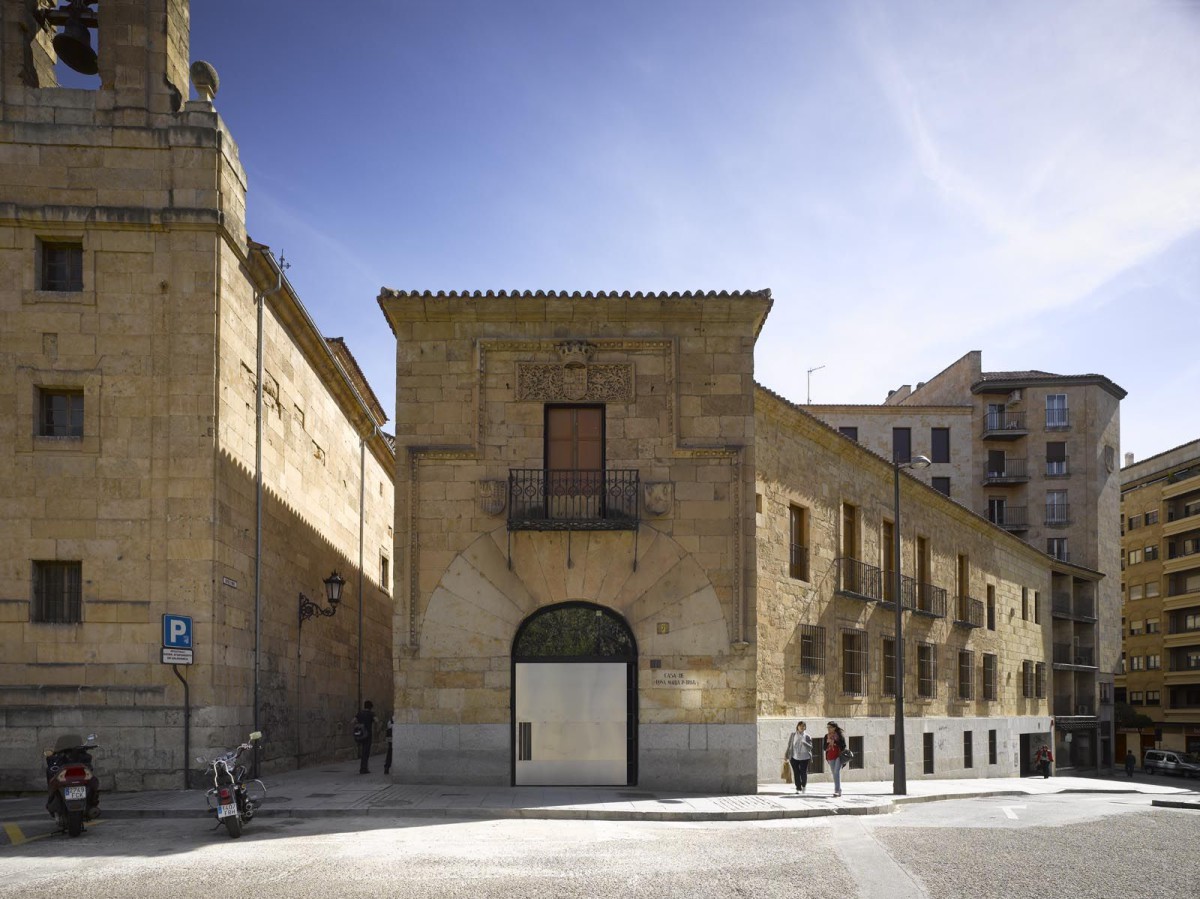Ensamble Studio . photos: © Roland Halbe
The building known as Casa de María La Brava is located in the heart of the historic center of Salamanca, at the Plaza de los Bandos; it is a small two-story building that was originally the place where Mrs. María de Monroy lived. She was also known as La Brava (The Brave), a nickname acquired when she avenged the death of her two sons during the riots between opposite sides occurred in Salamanca during the 15th century. It seems that historic cities continue the debate between opposite sides. One strongly governed by those who wish to stop time, and to guard the legacy of history; and the other, by those who understand that intelligence is able to continue building history, without disregarding the achievements of the past. Rome, the best example of harmony amongst architecture of distant artistic periods, has been built this way.
Behind the beautiful facade of the Casa de María La Brava, we find a structure no more than 10 years old, built with reticular concrete floor slabs, and other contemporary techniques, with neither historical nor spatial value. In this given container, we had to create a small museum to house the Gabarrón Foundation’s collection of pre-Columbian American art pieces. Studying thoroughly the ancient cultures of America provoked the need to transport us to a new mysterious world, and the space had to echo the difference between cultures, between times. Therefore, to go through the Salamanca stone facade, a thick stainless steel gate announces the treasure it protects and serves as a threshold between the historical Salamanca and the new 21st century museum space housed within. When crossing this threshold, we leave behind the ochre and golden colors of Salamanca’s historic center sandstone, giving way to a metallic space with cold lights sliding on its interior walls that invokes an ambiguous time, between tradition and modernity.
Small-scale extruded aluminum profiles have been the only material used, configuring a tissue that tenses and qualifies uniformly the interior space by means of artificial light vibration. This energy combines neutral color and cold LED lamps with golden light stripes that mark the exhibiting showcases, and builds the space that links the different times that meet at the Museum: the representation of history through the contents of the collection objects, and a contemporary container that serves the needs of society. Memory enables us to jump from one story to another, from one time to another, but once the journey is finished, we find ourselves in 2010.


















